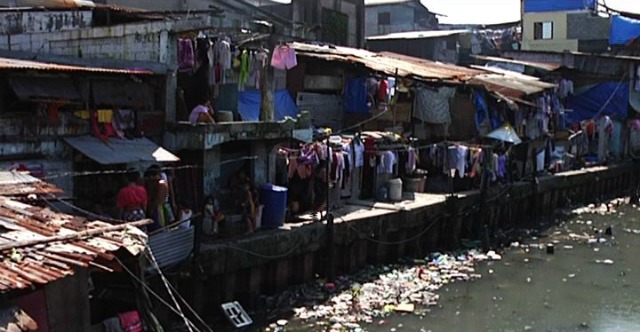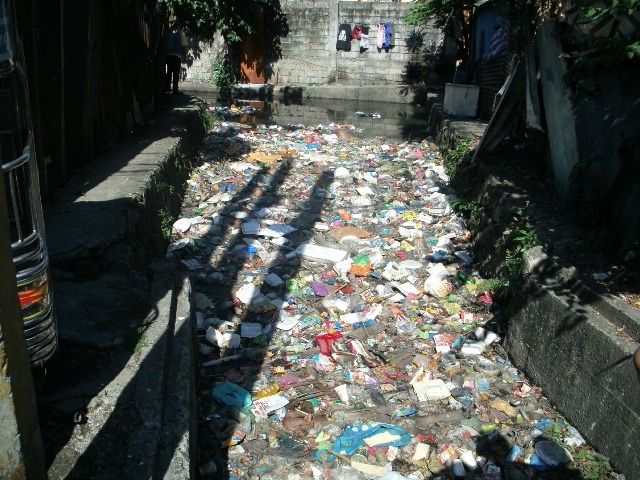'Investigative Docus' looks at 3 of the PHL's dirtiest rivers
The Parañaque, Marilao, and Pasig Rivers are three of the dirtiest in the country. What’s being done to revive them? In a recent episode, the GMA News TV program “Investigative Documentaries” looked at the current state of these waterways and current efforts by government and civil society to rehabilitate them.
 Last year, Parañaque River was in the Department of Environment and Natural Resources’ list of ten dirtiest rivers in the Philippines. Photo Credit: Investigative Documentaries. Over 3000 residents live along the three-kilometer-long Parañaque river. Because a major source of pollution in the river is domestic waste, environmentalists say the river’s rehabilitation depends upon the relocation of nearby communities. The local government of Parañaque, Rotary Homes, and the Canadian NGO Answering the Cry Of the Poor (ANCOP) are currently working together to relocate these residents to a site along C5 extension, and to another site funded by the Ninoy Aquino International Airport (NAIA). The project leverages the culture of “bayanihan” by encouraging community members to help build one another’s homes.
Last year, Parañaque River was in the Department of Environment and Natural Resources’ list of ten dirtiest rivers in the Philippines. Photo Credit: Investigative Documentaries. Over 3000 residents live along the three-kilometer-long Parañaque river. Because a major source of pollution in the river is domestic waste, environmentalists say the river’s rehabilitation depends upon the relocation of nearby communities. The local government of Parañaque, Rotary Homes, and the Canadian NGO Answering the Cry Of the Poor (ANCOP) are currently working together to relocate these residents to a site along C5 extension, and to another site funded by the Ninoy Aquino International Airport (NAIA). The project leverages the culture of “bayanihan” by encouraging community members to help build one another’s homes.
Meycauayan-Marilao-Obando River System
 In 2007, the Marilao River system was listed by Blacksmith Institute, an international non-profit think tank, as one of the 30 dirtiest rivers in the world. Photo Credit: Investigative Documentaries. The Meycauayan-Marilao-Obando river system covers seven towns and cities: Meycauayan, Marilao, Obando, Sta. Maria and San Jose del Monte in Bulacan, and Valenzuela and Caloocan in Manila. Bulacan used to be one of the biggest suppliers of fish in Region 3 and even Metro Manila, but the Bureau of Agricultural Statistics says that fish supply has decreased by over 40 percent over the past decade, largely because of pollution from nearby factories. Much of the pollution in this river system comes from nearby industrial plants. Mary Lazaro, the President of the Tannery Association of the Philippines, admits that it’s difficult to convince companies to maintain wastewater treatment facilities, which are costly but necessary to prevent pollution. “Gawa ka nang gawa ng balat, nakakaluto ka, nakakabenta ka, pero tingnan mo naman, at the end, hindi mo lang nilalason ang iyong ilog, pati na din yung lupa mo, nilalason. Talagang mahal (ang water treatment) but that will always be part of the cost. Obligation natin ito e,” she explains.
In 2007, the Marilao River system was listed by Blacksmith Institute, an international non-profit think tank, as one of the 30 dirtiest rivers in the world. Photo Credit: Investigative Documentaries. The Meycauayan-Marilao-Obando river system covers seven towns and cities: Meycauayan, Marilao, Obando, Sta. Maria and San Jose del Monte in Bulacan, and Valenzuela and Caloocan in Manila. Bulacan used to be one of the biggest suppliers of fish in Region 3 and even Metro Manila, but the Bureau of Agricultural Statistics says that fish supply has decreased by over 40 percent over the past decade, largely because of pollution from nearby factories. Much of the pollution in this river system comes from nearby industrial plants. Mary Lazaro, the President of the Tannery Association of the Philippines, admits that it’s difficult to convince companies to maintain wastewater treatment facilities, which are costly but necessary to prevent pollution. “Gawa ka nang gawa ng balat, nakakaluto ka, nakakabenta ka, pero tingnan mo naman, at the end, hindi mo lang nilalason ang iyong ilog, pati na din yung lupa mo, nilalason. Talagang mahal (ang water treatment) but that will always be part of the cost. Obligation natin ito e,” she explains.
 In 2006, Pasig River was also one of the most polluted in the world according to the United Nations Development Programme. Photo Credit: PRRC. As Metro Manila’s population has ballooned over the past decades, the once-clear waters of Pasig River have turned the color of mud. “Kahit anong rehabilitation, or clean up project, mahirap talaga. And based dun sa report na ginawa namin, napakalaki ng cost para linisin ang isang ilog, or rehabilitate,” says Beau Baconguis of Greenpeace. For over four decades, there have been efforts to revive the Pasig River. But Dr. Eugenia Lagmay of the Pasig River Rehabilitation Commission (PRRC) says the river can’t be revived without first cleaning the over 40 polluted canals or esteros that flow into it. This requires not only resources and political will from the government, but cooperation of those who live near the water. Catch "Investigative Documentaries" every Thursday at 8:00 PM on GMA News TV Channel 11. Follow them on Facebook and Twitter. —Angel Bombarda/PF, GMA News
In 2006, Pasig River was also one of the most polluted in the world according to the United Nations Development Programme. Photo Credit: PRRC. As Metro Manila’s population has ballooned over the past decades, the once-clear waters of Pasig River have turned the color of mud. “Kahit anong rehabilitation, or clean up project, mahirap talaga. And based dun sa report na ginawa namin, napakalaki ng cost para linisin ang isang ilog, or rehabilitate,” says Beau Baconguis of Greenpeace. For over four decades, there have been efforts to revive the Pasig River. But Dr. Eugenia Lagmay of the Pasig River Rehabilitation Commission (PRRC) says the river can’t be revived without first cleaning the over 40 polluted canals or esteros that flow into it. This requires not only resources and political will from the government, but cooperation of those who live near the water. Catch "Investigative Documentaries" every Thursday at 8:00 PM on GMA News TV Channel 11. Follow them on Facebook and Twitter. —Angel Bombarda/PF, GMA News




